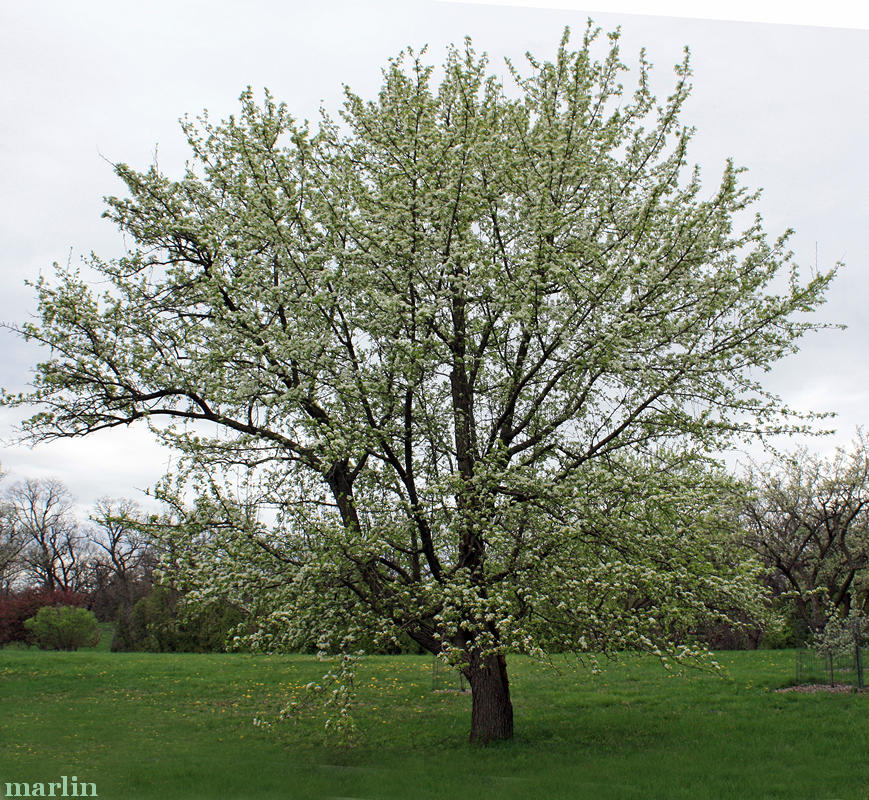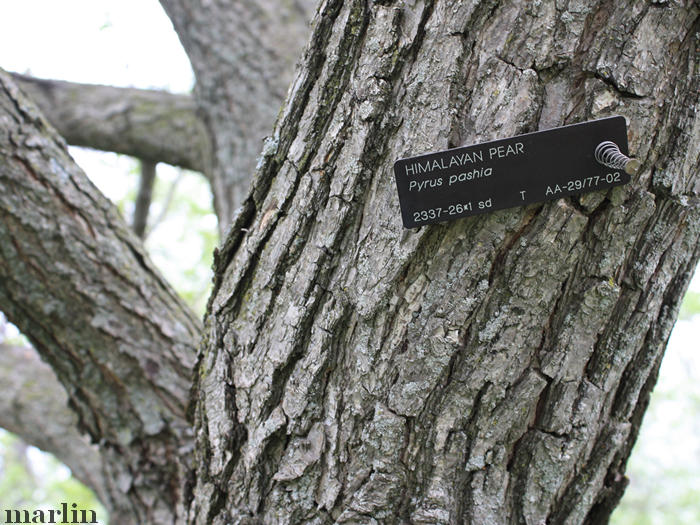Himalayan Pear – Pyrus pashia

This tree was grown from seed in 1926 – one of Joy Morton’s original plantings
The fruit of this unassuming tree has become the focus of many a snake oil salesman.
Himalayan Pear is found in the Himalaya, from Afghanistan to SW China and Burma, at altitudes of 750-2700 m. Flowering: March-April. It grows best in full sun but will tolerate partial shade.
Likes and well-drained soil but is easily adapted to various stressors, including acidic and alkaline Ph, restricted growth space, pollution, drought, and pruning. This tree is very hardy and used to growing in very poor soils. The fruit is rather gritty and sour-tasting; not the sort of fruit tree you’ll want if you’re thinking about the squishy variety you serve with cottage cheese.

And speaking of which, a cottage industry in bullshit has arisen around the fruit of the Himalayan pear. There are numerous off and online snake oil salesmen touting its alleged “ability to prevent the growth of colon polyps.” Wikipedia actually cited some blogger who’d spammed the references in the article. (Yes, I edited it.) There are no credible scientific studies backing up any of these claims.

Pear has fine-grained wood pink to yellow in tone. It is prized for woodwind instruments and its veneer is used for fine furniture. Pear has one of the finest of textures of the fruitwoods, and was often used in making instruments such as lutes, recorders and – because of its hardness – the jacks of harpsichords.
References:
- Flowers of India, “Himalayan Pear
- Horticultural and Crop Science, Ohio State University, Pyrus calleryana
- Pronunciation of Pyrus calleryana from University of Connecticut Plant Database
Family Rosaceae – Rose Family; Fruit Trees
Many of these plants are of vital economic importance, the fruit of which contain vitamins, acids, and sugars and can be used both raw and for making preserves, jam, jelly, candy, wine, brandy, cider and other beverages. Tree Encyclopedia | Tree Index
